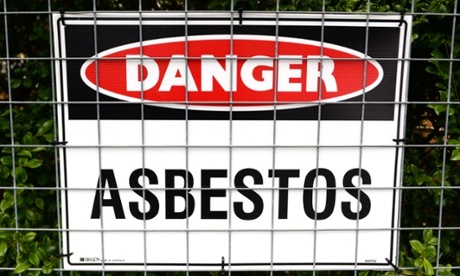Head of the Australian asbestos safety agency says the list of homes affected by the carcinogenic material should be publicly available

The head of Australia’s national asbestos management agency has called for a list of homes affected by loose-fill asbestos in the Australian Capital Territory to be made public.
There have been broad concerns across the territory about the risks of exposure to loose fill asbestos from houses insulated by a contractor in the 1960s and 1970s known as “Mr Fluffy.”
In 2013 it was revealed that the remediation efforts that took place in the 1980s may not have been as thorough as first believed, and several houses have been discovered with fibres that have penetrated into living spaces potentially causing exposure that could lead to dust diseases.
More than 1,000 homes are believed to be affected, but the ACT government has withheld the addresses after requests under freedom of information laws.
There are obligations on homeowners, agents and occupants to reveal their house is a “Mr Fluffy” home to prospective purchasers or contractors working on the site.
Peter Tighe, the head of the Asbestos Safety and Eradication Agency, said: “It either ought to be publicly available or it should be publicly available on application.”
“It’s the territory’s call at the end of the day, but I think the list of houses will come out anyway if they move down the demolish route.
“The big argument in relation to this is if you go out and name the properties then the value of the asset’s going to drop dramatically. I think that arguments been lost. Nobody’s going to buy a fibro house in that age demographic unless they can get a complete assurance that’s not a Mr Fluffy house.”
The ACT chief minister, Katy Gallagher, said there were other considerations that weighed in favour of restricting access to the list.
“The issue for me is that within those homes the vast majority of those people do not want their address publicised,” she said.
“People are quite traumatised by what’s happening and I can’t see any public health reason to make public that list.”
Andrew Keffer, the head of the ACT’s taskforce set up to advise the government on the Mr Fluffy houses said: “Yes we need to inform people who might be exposed, but at the same time we can do that without publishing the list to the whole world. So we’ve had to set up other mechanisms by which people can find out about a house they have an interest in but we’re not publishing the list for general information.”
Keffer said the were a range of obligations on different parties who might be in control of a Mr Fluffy house that enable people to find out if they are affected.
“What we’re doing is making sure people who have a particular interest in a particular house can known and can find out so that those concerns don’t come to fruition,” he said.
The ACT is currently grappling with how to handle the issues presented by the houses, some of which may need to be demolished entirely if they cannot be remediated.
Advice from Kefford’s task force is set to be provided to the government in August to determine a way forward. The ACT and federal government are also in discussions about funding arrangements, although there has been no formal deal struck at this stage.
Tighe added the ACT Government had been responding well to the issues presented by the homes, and said the taskforce was “working in the right direction”.
